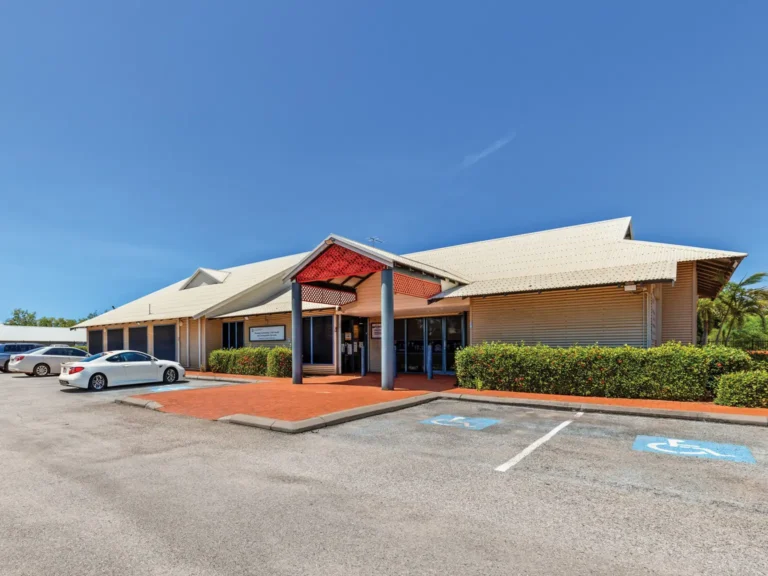Demand for childcare services surges driven by population growth and more parents entering the workforce
23/10/2024

Colliers’ ‘Premium Investments’ Report explores the rising demand for childcare assets amongst investors including high net worths and Australian real estate investment funds.
According to the recent Colliers Premium Investments National Research Report, the demand for childcare facilities is likely to heighten, as population for the age cohort is also forecast to grow by 9% (1.1% per annum) between 2023 and 2031 (.idSAFi).
In the Report, Colliers states that whilst several factors have affected the industry in recent years including the pandemic, staff shortages, stricter government regulations and inflationary pressures, the childcare market has become increasingly desirable by a wide range of investors.
Colliers reports that this increase is driven by significant population growth and high employment rates, which have both led to childcare facilities becoming a truly attractive defensive investment proposition in Australia.
Childcare facilities continue to draw interest from investors due to positive aspects such as secure leases, long WALE, stabilised asset, Government subsidies provided, industry support, strong rental growth and typically, properties that are strategically placed on well-located sites.
According to Colliers, the sector has been extremely competitive in recent years, driven by low interest rates and profitability, evident through the buyer activity and sales volumes. The highest level of childcare sales was recorded in 2023 of a total of $389 million across 83 transactions, nationally. This was an increase from the previous year by 9.8%. Whilst buyer activity has softened in the first half of 2024, close to 30 transactions have occurred equating to $134 million.
“The childcare market has a positive outlook and remains appealing to investors. With strategic direction, childcare assets can yield high returns. Workforce growth is expected due to higher staff-to-child ratio requirements, and is underpinned by government initiatives. Premium centres offering niche services like medical care, fitness and language classess as well as other extra-curricilar activites are on the rise, in turn boosting revenues. We have seen enquiry from investors seeking sites in undersupplied regions, especially newer developments with better facilities,’ Jordan McConnell, National Director | Head of Premium Investments, Australia at Colliers said.
Colliers also highlights the vast aray of opportunistic investors in the market, in particular equity-strong private investors who are less affected by interest rate hikes and are seeking the right property at the right time. Having said this, the company states that there are also investors who are adopting a wait-and-see approach due to the high borrowing cost.
“Investors are shifting focus towards more secure defensive assets which provide security of tenure, covenant and projectable long-term returns. As such, we expect continued heightened demand across these specialised asset classes moving forward with these defensive assets becoming highly desirable options for private and institutional purchasers,’ Mr McConnell said.
Colliers also states that yields have typically ranged between 5%-6% in 2023 and have long term lease terms of typically 12-15 years. Strong investor appetite is evident for newer centres backed by a high-quality lease covenants to experienced operators in locations with key demand fundamentals.
Childcare assets recorded the second largest proportion of sales activity across the premium investment sectors over the last 18 months accounting for 18% over 2023 and so far over 2024.
Queensland is one of only two states that have experienced both positive and interstate migration over the past 12 months. This, combined with increased demand for essential services, continues to attract investors looking to capitalise on the state’s population-driven growth.
“The recent surge in demand for childcare services across Australia has been driven by population growth and more parents entering the workforce, which has attracted significant investor interest. As of December 2023, there were approximately 1,512,800 children under the age of four in Australia, representing 5.6% of the total population (ABS). Western Australia (5.8%) and NSW (5.7%) had the highest proportions of children under four,’ National Director | Research Australia, Joanne Henderson said.
Private and institutional buyers remain active in the sector, bolstered by government subsidies and stimulus. This support has sustained confidence in childcare as a long-term, defensive investment.
The childcare industry in Australia is anticipated to have revenue growth of 6.2% in 2023-24 which has been accelerated by the changes in the Childcare Subsidy. In the longer term, revenue is forecast to grow by 3.1% per annum over the five years to 2028-29 to an estimated $20.3 billion nationally (IBISWorld). Institutional and private investors have capitalised on childcare investment over the past two years and built their portfolios and development pipelines.
Over the past three years to March 2024, the number of children using childcare facilities has increased by 4.7% equating to 919,560 children nationally (Department of Education). As the demand for childcare participation grows, so has the number of centre-based day care facilities around the nation.
“As the industry evolves and population forecasts rise, future demand trends become clearer. Increasing demand for childcare services boosts the number of daycare facilities nationwide in particular for QLD, WA and NSW. A growing population in these states drives the need for essential services, leading to greater demand for real estate to support childcare centers. Building owners should look to incorporate facilities in their buildings as a reliable income source and capital growth,’ Ms Henderson said.
Australian Property Markets News



